Charles Fry and Beryl Smith (WWII): Letters of Love and Devotion
By Alice Rawkins, Visitor Services Assistant, Anzac Square Memorial Galleries | 21 September 2021
During times of conflict, love and relationships continue to play an important role in the lives of service personnel and those left behind on the homefront. Few relationships were left untouched by the scale of the Second World War (WWII), with many couples separated for years, uncertain if they would ever be reunited. This was the case for fighter pilot Charles Fry and his sweetheart Beryl Smith, whose wartime correspondence is part of State Library of Queensland’s 's extensive military collections. Their letters, available online here, span from 1937 to 1946 and are both sweet and highly entertaining. Moreover, they provide a unique personal insight into how relationships could be shaped and impacted by WWII.
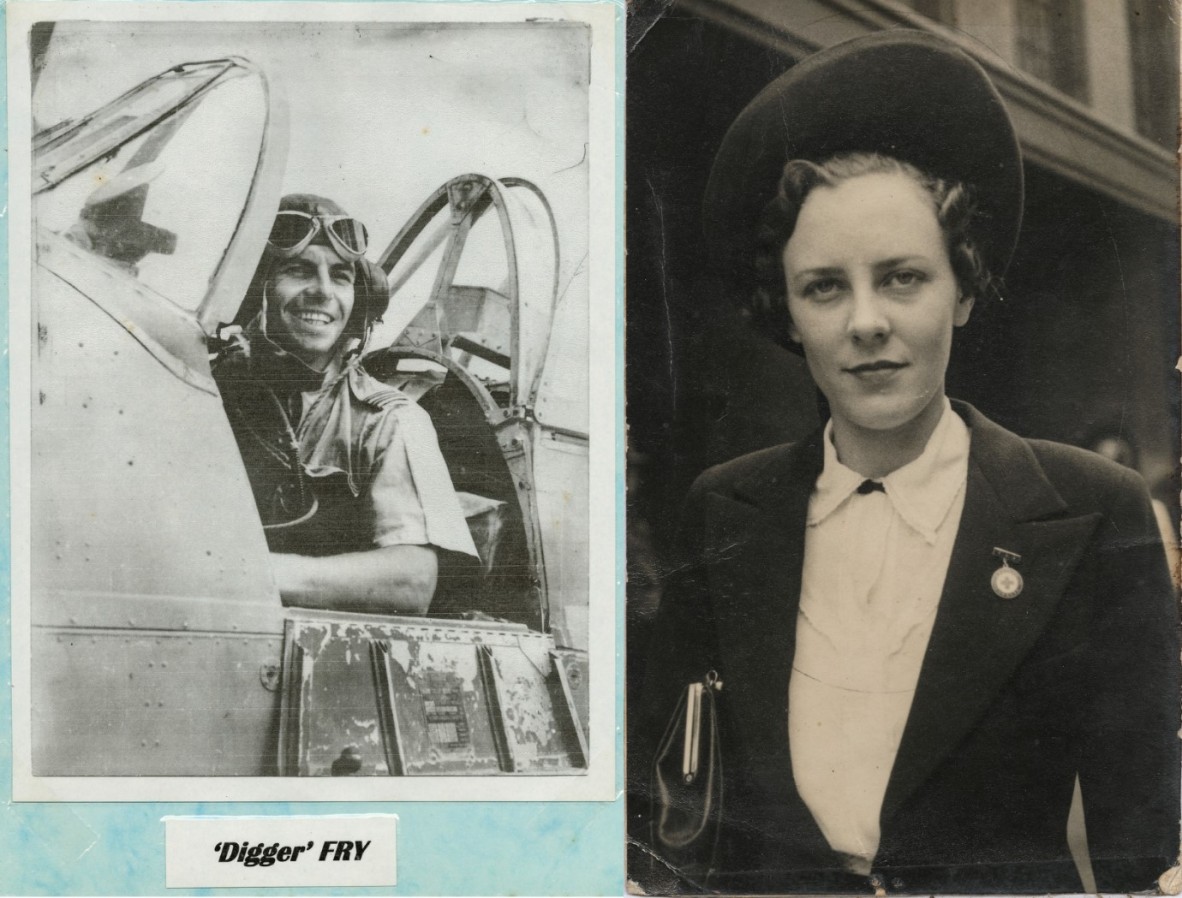
31299 Charles Fry and Beryl Smith correspondence 1937-1946. John Oxley Library, State Library of Queensland. Image numbers: 31299/1 and 31299/98.
Charles enlisted in the Royal Australian Air Force in June 1936, having graduated as an air cadet from the No.1 Flying School in Point Cook, Victoria. He was then granted a secondment to the Royal Air Force (RAF) in 1937 and sent to train as a pilot at Biggin Hill in Kent. While serving overseas, Charles continued to correspond with his long-term girlfriend, Beryl Smith, who he had left behind while he pursued his flying career.
Charles and Beryl first met while in college and knew each other for several years before he began his flying career. In a letter to Beryl in 1936, while still training in Australia, Charles reminisces on their first meeting and how it had been his “lucky day” (Letter, 1936, 31299/22 p 1). He goes on to recall how the pair had gone on a boat trip to Broken Bay. During this outing Beryl suffered from terrible motion sickness with Charles jokingly writing “I had to hold your hand while (shall I say) you fed the sharks” (Letter, 1936, 31299/22, pg. 2). Despite the clear affection between the pair, Charles decided not to propose before embarking overseas in 1937, believing that it was not fair for Beryl to wait for him as he would be gone for several years. But she did wait, and their relationship continued via written correspondence. The separation was obviously hard on the pair, with Charles writing on 10 August 1937:
Dear I wish you were here with me. I miss you a lot. Just think of the wonderful time we could have together, still we cannot help it can we?” (Letter, 1937, 31299/25, pg. 1).
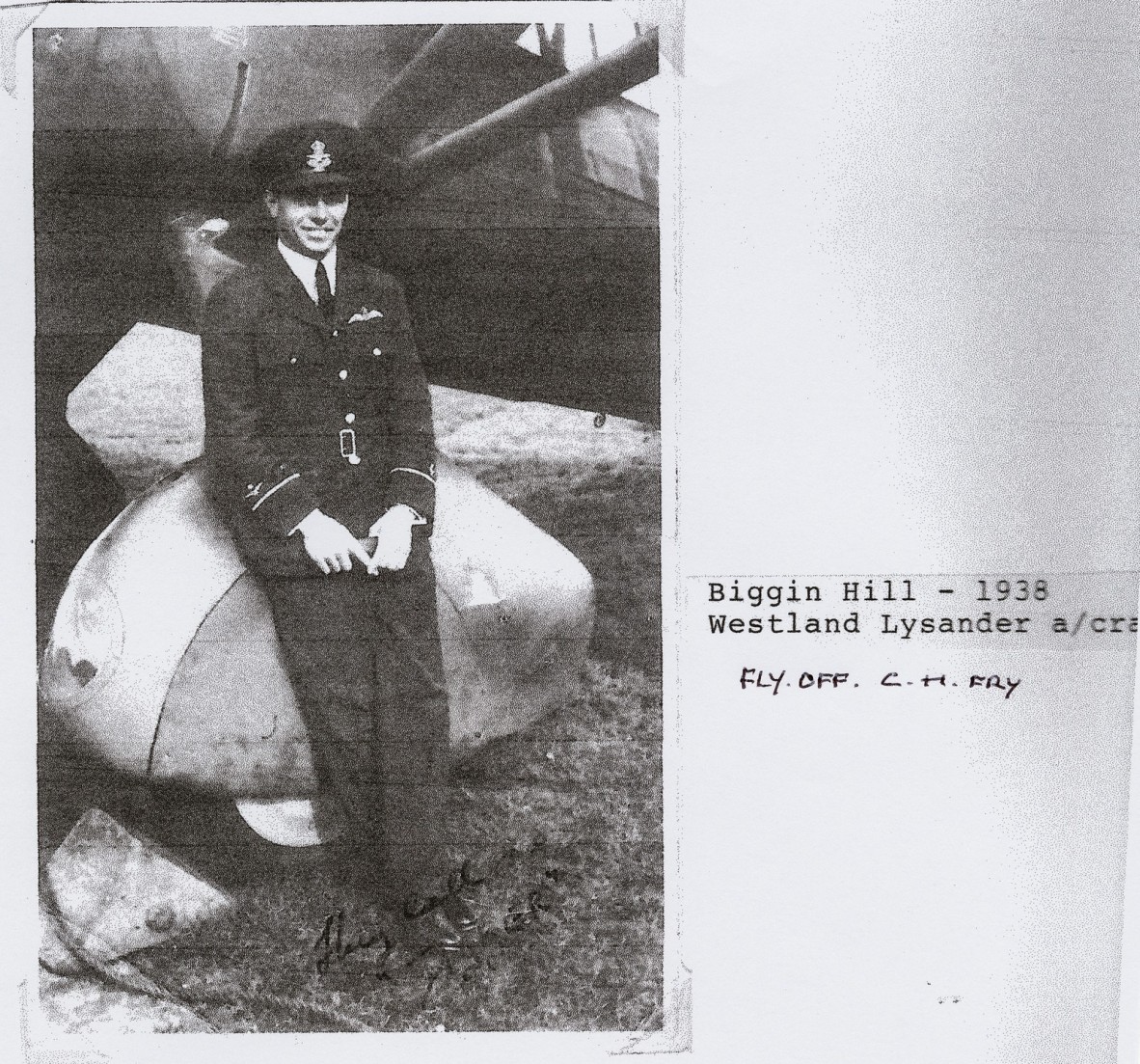
Charles Fry at Biggin Hill standing in front of a Westland Lysander aircraft, 1938. 31299 Charles Fry and Beryl Smith correspondence 1937-1946. John Oxley Library, State Library of Queensland. Image number: 31299/29.
In May 1939, Flight Lieutenant Fry joined the No. 112 Squadron, RAF, and was posted to Egypt, where he flew Gloster Gladiators. Two months into WWII, Charles realised that he had made a terrible mistake not asking Beryl to marry him. In a letter to his “darling Bebs”, dated 6 November, he wrote:
Beryl darling, I am going to do now what I wanted to do before I left Australia, I sincerely wanted to ask you to wait for me to return home, but I did not dare to, as it seemed so unfair because 5 years is a very long time, but now darling I want you to, very much. Please darling, this is a proposal. I want to marry you, it will not be long before I shall be able to send enough money for your passage. Darling you know that I love you and that I want you more than anything that I have ever thought of wanting...” (Letter, 1939, 31299/34, pg. 1-2).
Anticipating that she would accept, he enclosed with his letter a cheque sufficient to purchase an engagement ring.
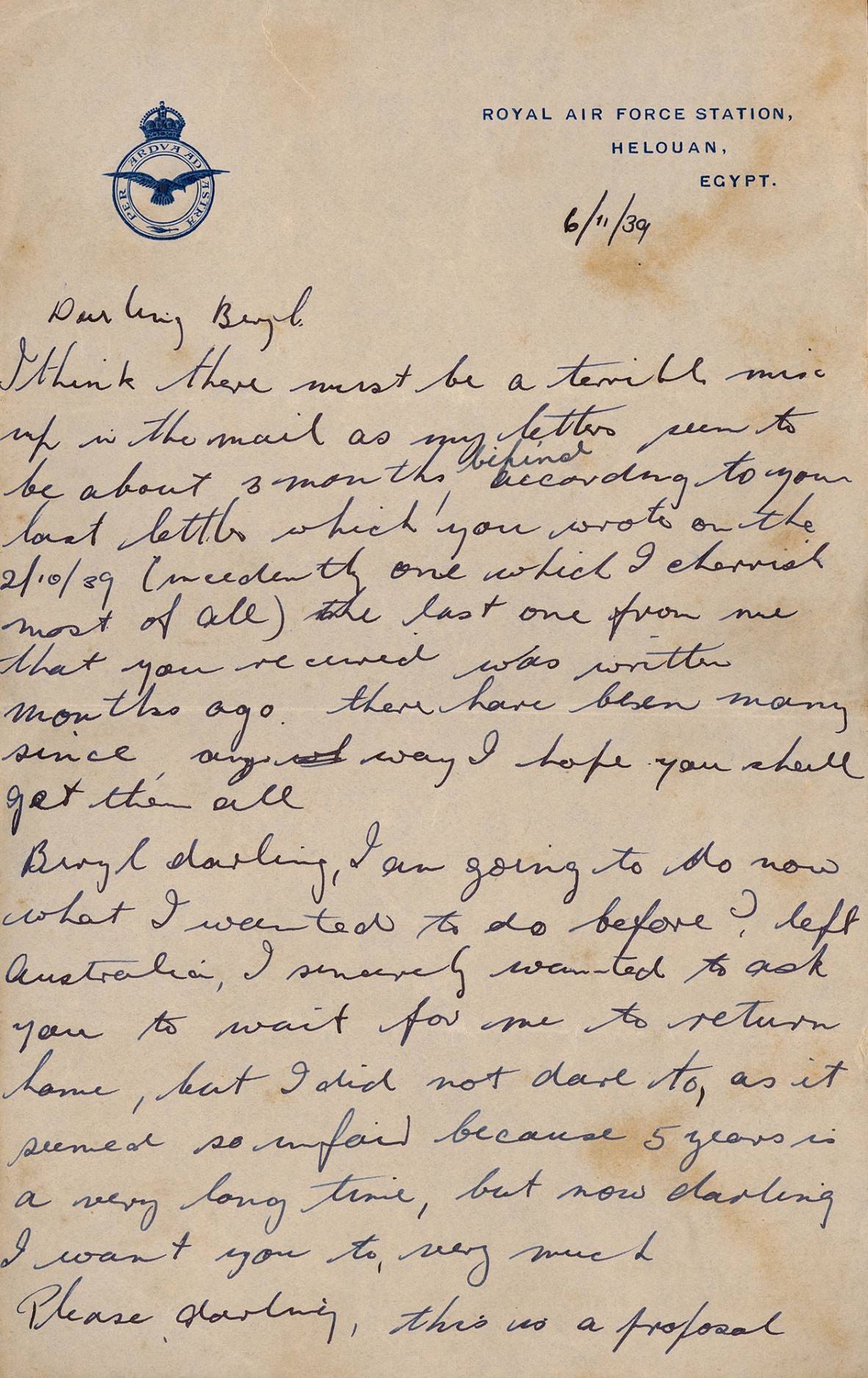
Letter 31299/34, 6 November 1939. 31299 Charles Fry and Beryl Smith correspondence 1937-1946. John Oxley Library, State Library of Queensland.
Beryl said YES to this long-awaited proposal, sending her reply, “Thrilled. Accepted. Love” in a telegram (Telegram, 1939, 31299/103). He was beside himself with joy at her acceptance, evident in his next letter where he writes:
At last my dream of almost eight years has nearly materialised, and I am very proud and happy of what we have so far accomplished. I was out on a desert landing ground when an aircraft brought in your cable, and the pilot thought I had gone crazy with the antics I performed.” (Letter, 1939, 31299/35, pg. 1).
Despite wanting Beryl to join him overseas, it was decided that she would remain in Australia due to the instability created by WWII.
As the war continued, Charles was promoted to Flight Commander and served in the Battles of Greece and Crete (1941), fighting both Italian and German foes. In May 1941, during the invasion of Greece, he engaged 15 hostile aircraft, singlehandedly destroying one and damaging another. During this action, his Hurricane Fighter aircraft was shot down. Charles managed to parachute to safety. Despite being wounded and unable to fly, he remained with his squadron, protecting its assets and personnel and assisting with their evacuation. For his bravery during this costly campaign Charles was awarded the Distinguished Flying Cross (DFC). When announcing this commendation, Air Minister, Mr. McEwen, noted that “Flight Lieutenant Fry had shot down six enemy aircraft in serial combat.” This was a slight exaggeration of the events, but was well received by the media and the Australian public.
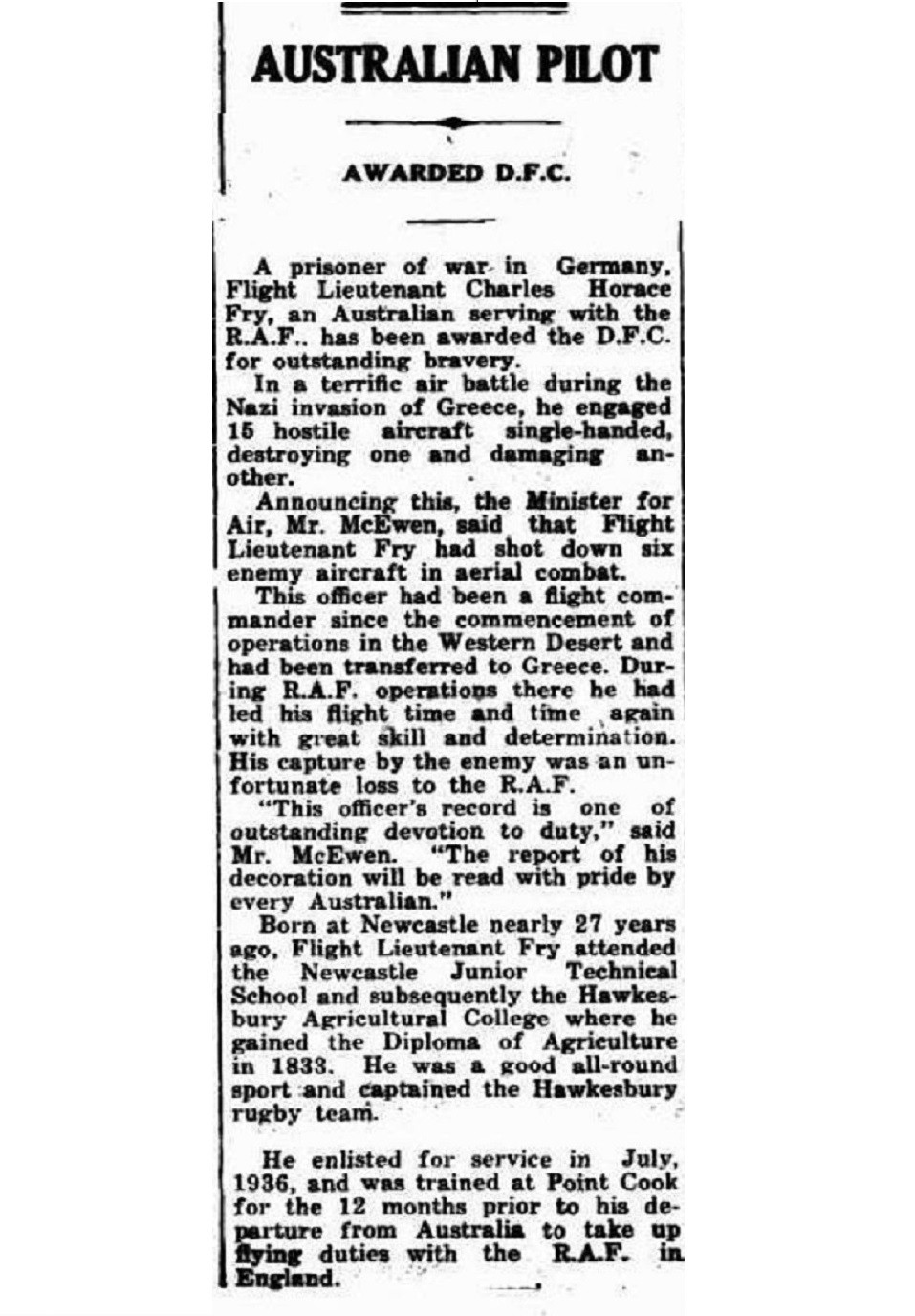
Australian Pilot Awarded DFC, Albany Advertiser, 11 September 1941, page 3. National Library of Australia.
Charles was eventually captured by German Forces on 6 June, and spent the remainder of the war in POW camps in Germany and later Poland. In a postcard in September 1941, Charles writes to Beryl that he was “still alive” but could “say very little.” Despite this, he encourages her “not worry about me for I shall be fine” (Postcard, 1941,31299/55, pg.2). Throughout his captivity Beryl sent him photographs and parcels, as well as many “newsy” letters. These letters of love and comfort would have been a welcome distraction from his imprisonment, and allowed Charles to remain connected to his family despite being far from home.
In the later years of the war, Beryl was appointed Parliamentary Secretary to Jack Beasley, Minister for Supply and Shipping, and a member of the War Cabinet. She moved to Canberra while waiting for Charles to be freed. Charles was finally liberated following Victory in Europe in May 1945, and was repatriated to England. Upon his arrival he telegrammed Beryl that he was safe and waiting to come home. Her response was ecstatic:
There are no words to express my happiness and joy at the news of your arrival in England. Oh, my darling, I am so happy … I am jealous of everyone who will be seeing you before I do. Darling, do hurry home or tell me to meet you half way.” (Letter, May 1945, 31299/194, pg. 1).
After four and half years as a POW, Charles was finally coming home. However, it would take several months before he was repatriated to Australia, with ceremonies organised so he could receive his Distinguished Flying Cross medal, as well as an award from the Greek Government for outstanding bravery. The delay clearly made Beryl impatient, with her writing on 5 July 1945, “I am dying darling to be in your arms and to be loving you and kissing you and holding you close” (Letter, July 1945, 31299/198).
Beryl and Charles were married two weeks after he returned to Australia in early September 1945. The pair had not seen each other in over eight years. Following the war, Charles applied for a permanent position with the Australian Air Force, but this was not approved due to his age. In 1946 the couple purchased a farm in Dalby, Queensland, where two of Charles’ brothers had settled with their families. The couple remained here for the rest of their lives. Theirs was the happy ending that so many couples did not have during WWII.
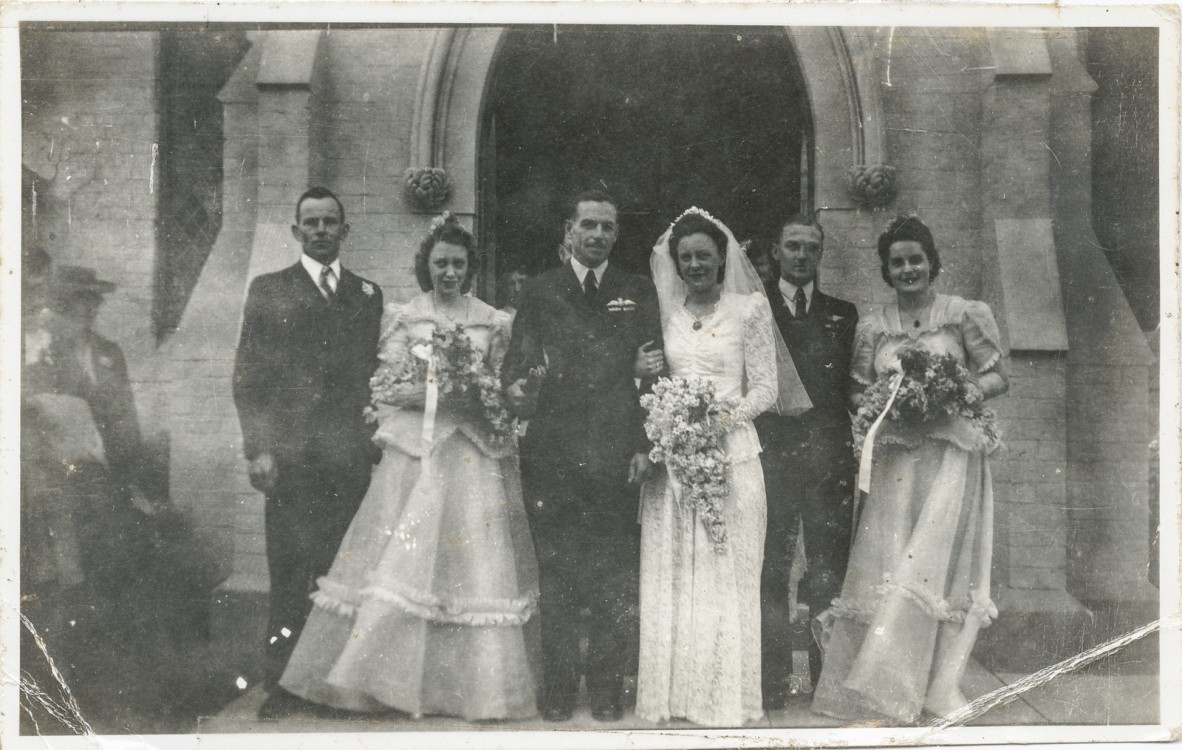
Charles Fry and Beryl Smith's wedding, 21 September 1949. 31299-34 Charles Fry and Beryl Smith Correspondence 1937-1946. John Oxley Library Brisbane, State Library of Queensland. Image number: 31299/99,
This couple’s story is featured in the WWII Gallery at Anzac Square Memorial Galleries, open 10am-4pm Sunday to Friday. They are also part of our 2021 Remembrance Day Campaign, which explores the personal stories of a range of past and present Queensland defence personnel.
Each year on 11 November, Australians observe one minute's silence at 11am, in memory of those who have died or suffered in all wars and armed conflicts. This year who will you stop to remember? Share your stories in the comment section below.
Resources
More information
- Anzac Square Memorial Galleries - https://www.anzacsquare.qld.gov.au/
- One Search - http://onesearch.slq.qld.gov.au
- Ask Us - /plan-my-visit/services/ask-us
Comments
Your email address will not be published.
We welcome relevant, respectful comments.